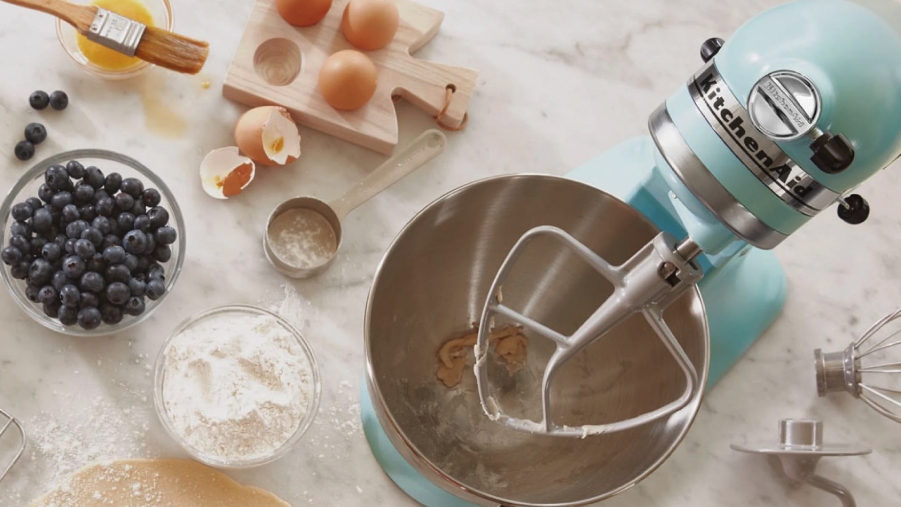To get the best rise out of your baked goods it’s important to understand the different types of leavening agents. Learn about the four main types of leaveners – chemical, biological, mechanical and physical – and how they work to make baked goods rise.
What is a leavening or raising agent?
A leavening agent is a substance that causes dough to expand by releasing gas once mixed with liquid, acid or heat. Rising agents give baked goods optimal volume, texture and crumb and can include baking soda or baking powder, whipped egg whites or cream, active or instant dry yeast, and even steam.
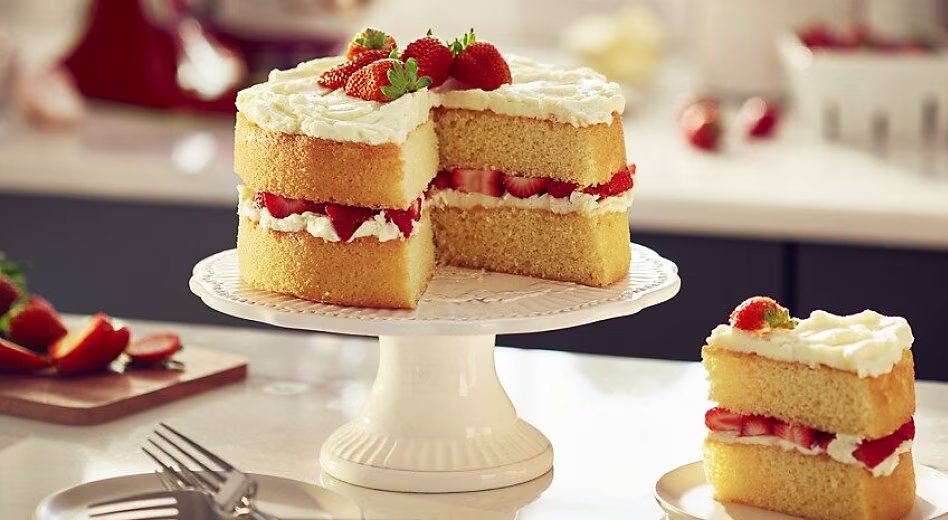
How to Leaven Breads, Cakes, Cookies and Baked Goods
Leavening adds volume to your baked goods, whether you’re baking bread, cake or cookies. The trapped air that is formed by the leavening process creates a more tender and open crumb in your breads and cakes and provides a more pleasant texture and mouthfeel. Without leavening, your desserts and breads will not rise and the product will be too dense.
This guide outlines the four main types of leavening agents and describes how each has its own purpose. Using the correct leavening agent will help deliver the most desirable results for the type of baked goods you are making. Your recipes will call for the agents that work best for baking, or bread dough that requires kneading and a long, slow fermenting and rising time.
What is a Natural Leavening Agent or Naturally Leavened Bread?
A natural leavening agent is a yeast substance that produces fermentation in bread dough or batter, making the dough rise. Naturally leavened bread is easily achieved by letting flour and water ferment. The most common types of natural leaveners include chemical, biological, physical and mechanical.
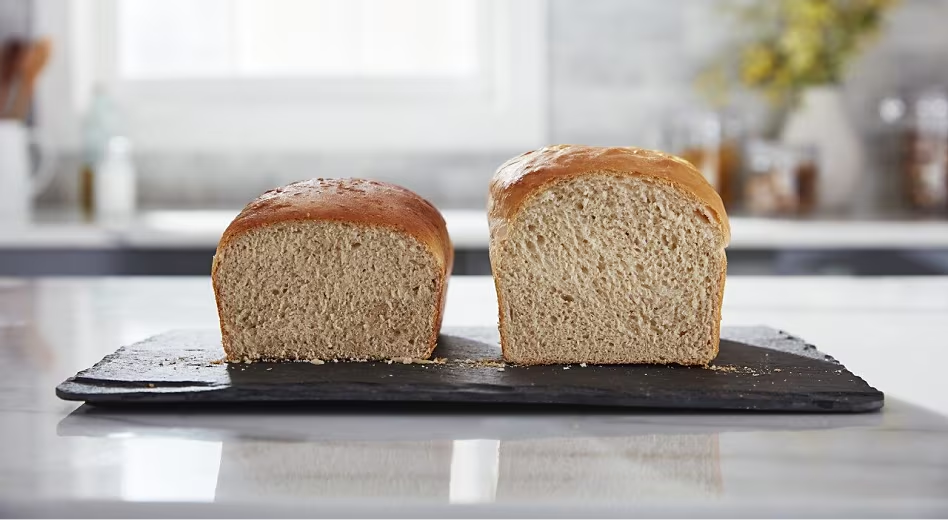
What are chemical leaveners?
A chemical leavener is a compound or a mixture that is added to dough or batter and releases gases when it reacts with moisture or heat.
How chemical leaveners work
When a chemical leavener such as baking soda is mixed with an acidic liquid such as buttermilk, yogurt, honey, or lemon juice it reacts quickly, expanding and creating volume in the dough. The word chemical simply describes the process of combining ingredients to produce a reaction, as in chemistry, and has nothing to do with harmful substances. Without chemical leavening, we wouldn’t be able to enjoy cookies, cakes and quick breads.
List of chemical leavening agents
Here are the most commonly used chemical leavening agents that you might find by themselves or combined in recipes for cakes, cookies and quick breads.
Baking soda
is also called bicarbonate of soda or sodium bicarbonate. When combined with an acid, carbon dioxide gas forms, producing bubbles that make the dough or batter rise.
Baking powder is a dry mixture made of a base of carbonate or bicarbonate and a weak acid. It is used to increase the volume and lighten the texture of baked goods.
Single-acting baking powder reacts when hydrated and does not need heat to react.
Double-acting baking powder reacts when hydrated and reacts again when heat is introduced.
Bakers ammonia is also called ammonium carbonate; it makes baked goods such as low moisture cookies and crackers light and crisp.
Substitution tip:
If you don’t have baking soda on hand, you can use baking powder instead. Be sure to double or triple the amount of baking powder because it is a mix of baking soda and cream of tartar, and contains less baking soda. Keep in mind that tripling baking powder may affect the taste of baked goods.
If you don’t have baking powder on hand, make your own using one part baking soda and two parts cream of tartar. Remember, homemade baking powder acts and tastes much like commercial baking powder.

When to use chemical leaveners in baking
Chemical leaveners are what make quick breads like banana bread rise quickly as it bakes and gives it a delicate, tender crumb. They also dictate whether a cookie is soft, chewy or crispy and they can help create the lightest, fluffiest buttermilk biscuits. It’s important to follow a recipe precisely, as adding too much of a chemical leavener can cause the dough or batter to over rise and leave a bitter taste.
Baked goods that require chemical leaveners include:
Cake
Coffee Cake
Cookies
Muffins
Brownies
Dessert Bars
Biscuits
Corn Bread
Doughnuts
Pancakes & Waffles
What are biological leavening agents?
A biological leavener is a substance called yeast that makes baked products lighter by helping them rise.
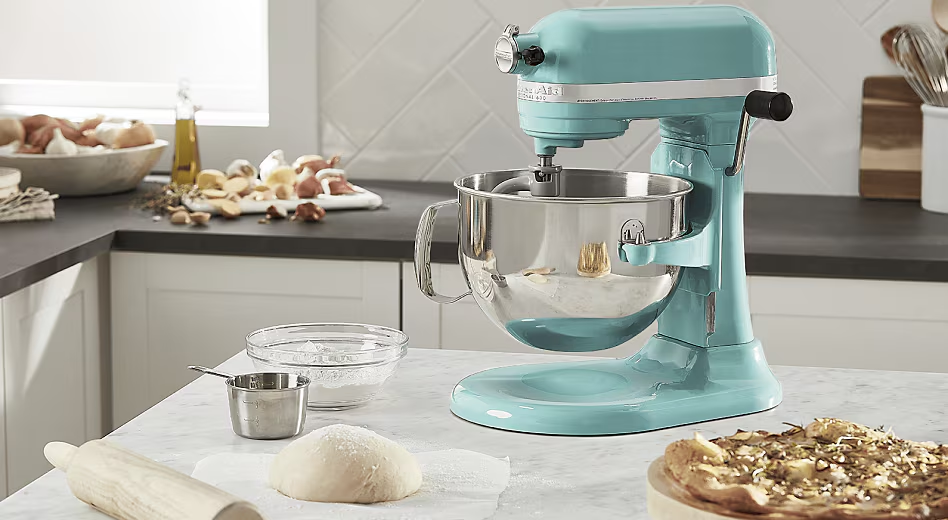
How biological leaveners work
Yeast is a one-celled fungus that activates the fermentation that converts sugar and starch into the carbon dioxide bubbles and alcohol that are necessary for bread dough to rise.
List of biological leavening agents
There are a number of biological leavening agents that are used in baking to make dough and batter rise, including:
Active Dry Yeast: this dry, granular yeast is the most commonly used. It must be activated or proofed by dissolving it in warm water, ideally heated to 105ºF.
Instant Dry Yeast: a dry, granular yeast that can be mixed directly in with your flour and does not require proofing. Use ⅓ to ½ less than active dry yeast.
Fresh Yeast: also called cake yeast is most commonly used in professional bakeries. It can be mixed directly into dry ingredients or dissolved in water to more evenly disperse it, but does not need to be proofed first.
Yeast Conversions: to use active dry yeast instead of instant yeast in a recipe, multiply the amount of yeast in the recipe by 1.25. To use active dry yeast instead of fresh yeast, multiply the fresh quantity by 0.4. To use instant dry yeast instead of fresh yeast, multiply the fresh quantity by 0.33.
Beer: has carbon dioxide in it and is used as a wet ingredient to leaven beer bread.
Fermented dough starter: a live culture made of flour and water that once mixed begins to ferment, cultivating the naturally occurring wild yeasts and bacteria present within the mixture. A small portion of this culture is used to make your bread dough rise.
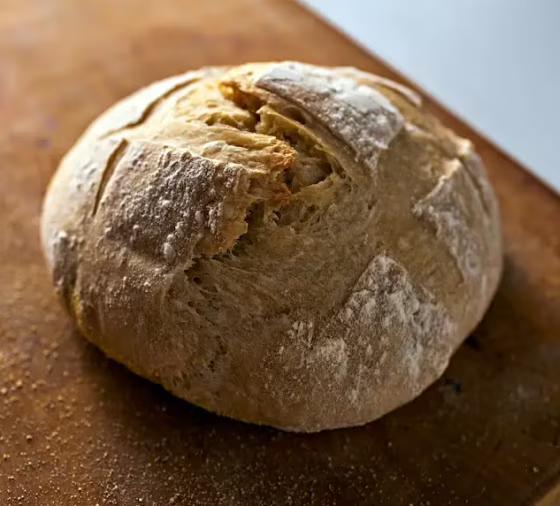
When to use biological leaveners in baking
A biological leavener is best for recipes such as yeasted cakes and yeasted bread doughs such as sourdough, that require a slow ferment in order to rise. Yeast helps dough rise over time and develops the desired volume and flavor of the finished product.
Other baked goods that require a biological leavener include:
English Muffins
Bread Sticks
Pizza
Naan
Flatbread
Focaccia
Injera
Buns
Cinnamon Rolls
What are mechanical leavening agents?
Mechanical leavening agents are ingredients that are mechanically manipulated to create tiny air bubbles and help baked goods rise by releasing the gas that’s trapped in the product.
How mechanical leaveners work
This form of leavening uses ingredients that are mixed by hand with a whisk or using a hand mixer, stand mixer or an immersion blender. You can cream fat and sugar, whip egg whites or whip heavy cream to create mechanical leavening in a recipe. When baked, the air within the dough or batter expands and the egg whites or fat stretches and then the dough sets in the expanded state.
List of mechanical leavening agents
There are a number of mechanical leavening agents that are used in baking to make dough and batter rise, including:
Whipped cream: whipping heavy cream traps air between thin layers of cream fat in a foam-like substance that expands and holds shape in baking.
Whipped egg whites: whisked or beaten at a very rapid pace so air bubbles become trapped in the soft or stiff peaks and provide most of the finished baked good’s structure.
Whipped whole eggs: often used in cake recipes will make the final product more dense than using only egg whites.
Whipped aqua faba: the liquid from canned or cooked chickpeas or other legumes can be whipped and used as an egg white replacement.
Whipped fats or creamed butter and sugar: cutting sugar crystals into fat produces air bubbles that cause a slight rise during baking. Most cookie recipes combine creamed butter and sugar with a chemical leavener to boost the rise.
Kneading: adds air into dough through repeated folding and rolling, which forms the network of gluten strands that make the dough rise.
When to use mechanical leaveners in baking
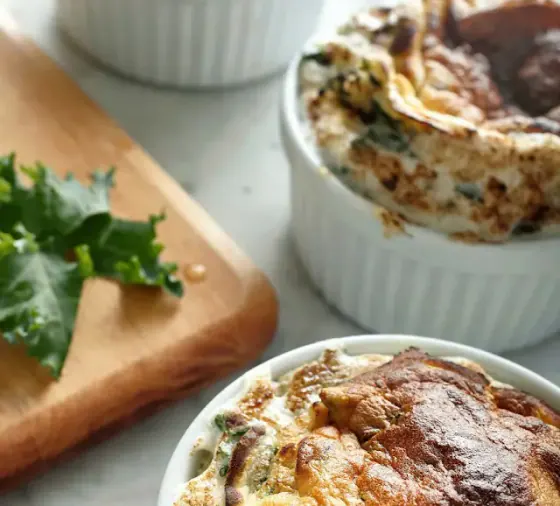
Mechanical leaveners are used to create light, fluffy baked goods such as a souffle that needs to rise a lot and hold its form when baked. They’re also important in many other types of baked goods and unbaked desserts, including:
Sponge Cake
Angel Food Cake
Chiffon Cake
Mousse
Frosting
Meringue
Biscuits
Cookies
Marshmallows
What are physical leavening agents?
The most commonly used physical leavening agent is the steam that forms in moist batter or layers of dough when it is introduced to high baking temperatures. The heat causes the water to convert to steam, which makes the product increase in volume up to as much as 1500 times its unbaked size.
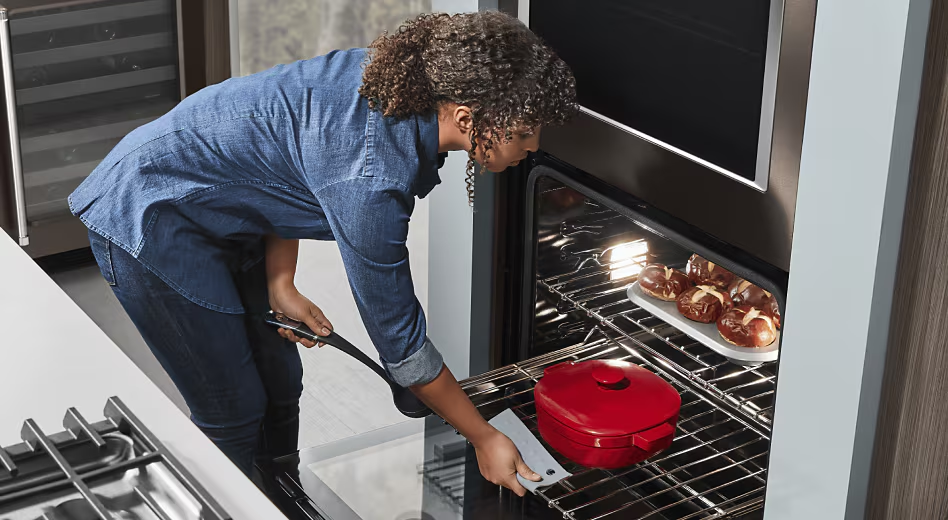
How physical leaveners work
When the moist dough or batter is heated at a high temperature, the liquid quickly transforms into steam that becomes trapped inside the layers of dough or the batter, which solidifies during baking, producing flaky, delicate layers. Air is another type of physical leavening created with a machine or a tool. This is sometimes referred to as mechanical leavening. Specialty appliances made for steam baking such as a KitchenAid® smart wall oven let you introduce additional moisture into a dry convection baking environment to help you produce crusty bread, creamy and smooth custards, and flaky pastries with delicate layers.
List of physical leavening agents
There are a several ways to easily introduce steam in your baking, including:
Steam oven: an oven that has a built-in mechanical function or an attachment that creates controlled steam injection.
Pan of water: set a sheet pan or cake pan on the bottom of the oven to preheat with the oven. Pour hot water into the pan after you place the dough on the rack, then close the door quickly.
Dome: enhance the pan of water method by placing a large metal mixing bowl over your loaf of bread to trap the steam.
Dutch oven or cloche: place the dough in a preheated heavy pan with a tight fitting lid to bake. The pan traps and enhances the steam created when the dough begins to rise. Remove the lid after 25 minutes to bake in a dry oven.
Bain marie or water bath: a pan of hot water placed in the oven to hold the baking pan. This adds moisture to the oven and surrounds the baking pan with gentle, uniform heat, which is important for cheesecakes and custards which easily crack or become rubbery.
Spray: a simple way to add steam is to spritz your bread dough a few times with water as it enters the oven. You can repeat after a minute or two and also spritz the sides of the oven to create more steam.
Remember that steam is ideal during the spring stage of baking, or when the dough or batter is first beginning to rise. The rest of the baking time should be done in a dry oven because if you continue to add moisture, the texture can become rubbery.
When to use physical leaveners in baking
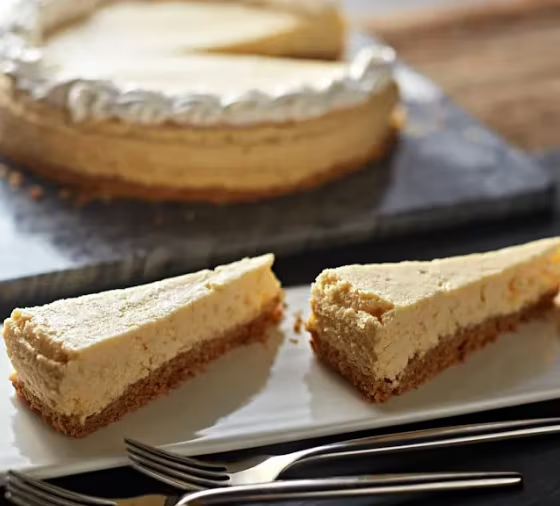
You’ll use steam in your baking whenever you make cheesecake or custards to ensure the top doesn’t form wide cracks from dry heat. Steam will also help you develop beautiful crusts on your favorite breads. Physical leavening with steam is an important method for many other types of baked goods, including:
Choux Pastry
Cream Puffs
Eclairs
Tarts
Appetizers
Popovers
Pie Crust
Quiche
Custard
Troubleshooting bread or cake leavening
Sometimes baked goods just don’t come out the way you planned and you can often trace the cause to the leavening. Some common leavening issues include:
Cake collapsed in the middle - this is most often caused by too much baking soda, which reacts quickly in the oven, causing gas bubbles to rise to the top and then pop. You can help control this by weighing ingredients precisely, and by allowing mixed batter to sit for a few minutes to let some of the gas bubbles escape before putting it in the oven.
Cookies spread out - to keep cookies from becoming puddles, you can add 2 more tablespoons of flour to the dough to help hold the melting fat. You can also roll cookie dough into balls and refrigerate or freeze them for ten minutes before baking to help control spreading.
Bread is dense and heavy - there are several reasons why your bread might come out feeling like a brick. You may not have kneaded the dough long enough to form a uniform gluten strand mesh, which is what makes dough rise. Knead with a dough hook in your stand mixer until the dough appears soft, springy and forms a translucent rectangle when you stretch a small piece of it with your fingers. You may have mixed your yeast with salt, which kills yeast before it has a chance to activate the dough. Always mix salt in with flour after the yeast has activated. Finally, it’s important to be patient and take the time to properly shape your loaves so they have enough surface tension to rise and hold their shape in the oven. Learn more about what causes bread proving issues in this article.
Even the most creative baking is at its heart a science. Once you have a clear understanding of how these leavening agents work to produce the ideal volume and texture, baking will be more fun and the results will be more delicious than ever.
KitchenAid Chef
— Sharing our passion for making
At KitchenAid, we unite people who love cooking and baking, brewing and creating. For over 100 years, KitchenAid has worked on behalf of every Maker out there. Our iconic tools are made with you in mind — opening the door to new possibilities and helping you to get most out of making.

